#The Chancellorsville Campaign
Text
#OTD in 1863 – American Civil War | Thomas Francis Meagher on Battle of Chancellorsville.
Report of Brig. Gen. Thomas Francis Meagher, U. S. Army, commanding Second Brigade
APRIL 27-MAY 6, 1863 –– The Chancellorsville Campaign
BANKS’ FORD, NEAR FALMOUTH, VA.
April 28, 1863––1.30 p.m.
Maj. JOHN HANCOCK,
Assistant Adjutant-General, Hancock’s Division.
MAJOR: I have the honour to inform the major-general commanding the division that, in accordance with instructions received from him, I…

View On WordPress
#American Civil War#Battle of Chancellorsville#Brigadier Thomas Francis Meagher#General Thomas Francis Meagher#The Chancellorsville Campaign#Thomas Francis Meagher#U.S. Army
2 notes
·
View notes
Text
Vagabond
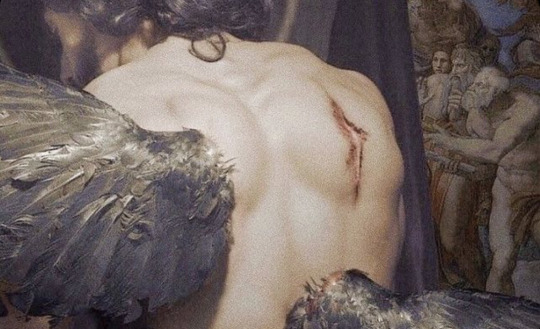
Vagabond — wandering from place to place without any settled home
Poly Lost Boys x GN Reader
Synopsis: Forgiveness is a fickle thing. When four souls find each other, the world finds its equilibrium once more; until the absence of another tips the scale forever. What happens when a familiar face shows itself back at the boardwalk after twenty years of absence?
Warnings: slight angst, lots of historical information in the beginning
Word Count: 3k
By issuing the Declaration of Independence, adopted by the Continental Congress on July 4th, 1776, the 13 American colonies severed their political connections to Great Britain.
You had been ten during the conflicts between America and Great Britain, young and impressionable. Your family came with Puritans, who set sail to America back in 1630. Unlike the Pilgrims, who had left ten years earlier, the Puritans did not break with the Church of England but sought to reform it. All that happened before you were born; your ancestors had settled down and spread their roots into American soil.
You recalled little of the American Revolution; after all, you were very young back then, but you remember December 15th, 1791, vividly. Your mother couldn't stop crying that day, and your father had pulled out the oldest whiskey they had that day. America was finally severed from the tyrannical rule of George III.
You came to understand the significance of those dates more as you aged, growing into a strong individual as you helped your family on their farm. You never intended to marry; it wasn't something you had ever desired or looked forward to. The same year you had gotten married was the day you lost your immortality; both events are related but not necessarily connected. You were introduced to the vampiric community in New Orleans, a city that used the day to sleep off the mistakes you made throughout the rambunctious night.
You had lived through the formation of the Constitution of the United States of America in 1787 when the founding fathers sought to implement more structure into the now independent country.
The infamous whiskey rebellion. American drunks apparently were not too keen about Alexander Hamilton implementing a liquor tax to try and raise money for the national debt; asserting the federal government's power back in 1794.
Only nine years later, the Louisiana Purchase happened in 1803. The small land purchase for only $27 million created room for the states of Louisiana, Missouri, Arkansas, Iowa, North Dakota, South Dakota, Nebraska, and Oklahoma, along with most of Kansas, Colorado, Wyoming, Montana, and Minnesota.
Throughout the 1810s and 1830s, you had moved on from New Orleans and left for New York, seeking human connections and reconnecting with the younger generations. During that time, the Battle of New Orleans in 1815 and the Monroe Doctrine in 1823 seemed to fly past you.
Then, signed on February 2nd, 1848, the Treaty of Guadalupe Hidalgo finally brought closure to the Mexican-American war. At this time, you were no stranger to political conflicts anymore, and the stench of blood and sweat staining battlefields was, unfortunately, no stranger.
Life moved on regardless, no matter the horrid realities life provided. For a short while, life had finally come to a stand-still, guns tucked away as the world in America resumed its development. Until April 12th, 1861, Confederate troops fired on Fort Sumter in South Carolina's Charleston Harbor at 4:30 A.M., A day that changed America forever, the beginning of the American Civil War.
The Emancipation Proclamation, The First Conscription Act, The Battle of Chancellorsville, The Vicksburg Campaign, The Gettysburg Campaign, The Battle of Chickamauga, The Battle of Chattanooga, The Siege of Knoxville. The list continued, and the coppery smell of wasted humanity tainted the air, the wind carrying the cries of victims throughout the nation.
The war ended in the Spring of 1865. Robert E. Lee surrendered the last major Confederate army to Ulysses S. Grant at Appomattox Courthouse on April 9th, 1865.
The number of soldiers who died throughout those four years eventually got estimated to be around 620,000.
Only 47 years later, on July 28th, 1914, the Austrian Archduke Franz Ferdinand was assassinated, beginning the cruel trench warfare of World War I. In early April 1917, America aided the effort to join a war to end all wars. You had entered the war effort, like everyone capable at the time; from soldiers to nurses, everyone gave aid.
On November 11th, 1918, the war ended. Although the Allies won, you found no reason to celebrate. Not when mothers sold their homes since there wasn't a reason to have a multiple-bedroom house anymore, when graveyards overflowed with the dead, when people mourned their losses, when mothers' only answer to their missing sons was a notice declaring their child missing in action.
The stock market crashed in 1929, kicking off the Great Depression that would last for more than a decade.
On September 1st, 1939, Germany invaded Poland. Kicking off World War II and beginning one of the most brutal warfare's, Blitzkrieg. On May 8th, 1945, Germany surrendered. After the atomic bomb was dropped on Hiroshima and Nagasaki, Japan surrendered on September 2nd, 1945, and the Second World War came to an end.
The war ended, and the surviving soldiers returned with missing limbs and broken spirits. You were a firm believer that humans were not meant to witness so much death; it tainted them; it dulled them. Although you were a vampire, a creature supposedly made for horror, you could not forget what you had witnessed in only the span of 21 years.
You were 201 years old now, relatively young in the grand scheme of time, but you had lived through a few of the greatest horrors the world had ever seen.
189 years of traversing the lands, you watched grow in a desperate search to find one of your own. Since you were turned and left New Orleans, you had not met a single vampire. You watched with sorrowful wisdom in your eyes as the world passed through you, virginity in people's expressions you wish you had. A gaze untainted by warfare, civil unrest, and brutality.
Although you have met the occasional human to brighten your own world, it did not cure you. Your search was desolate—fruitless.
Your feet had carried you to Santa Carla, the year now being 1963, and just as the five stages of grief had settled on acceptance. You bumped into a group of four rambunctious bikers that would change your life forever. That had been the first time you had met, and you had continued to live together, going on to live through the Civil Rights movement and grieving the assassination of Martin Luther King, Jr.
But on August 12th, 1967, you left Santa Carla. Your absence is only justified by a delicately written letter standing in your place. You had grown to love the boys, but you had lived differently compared to them.
Marko and Paul were younger vampires than you, having been turned while The Great Depression was bulldozing America. Dwanye had been older, abandoning his immortality in the 18th century along with David. All of them possessed the innate ability to move on from the past, a talent you, unfortunately, did not possess.
No matter how hard you tried, you could not find peace or excitement in the future. The uncertainty corrupted you, tormented you and your experiences, so you left. Not with the intent to abandon but to sort out whatever you had to sort out. Away from the prying eyes of those you loved, those who you did not want—couldn't disappoint.
Santa Carla, the town you had never been able to forget. It was 1987 now; twenty years had passed since you had seen the four vampires. You had missed them—a melancholic weight having nestled its way into your heart ever since you left. You regretted the way you had left through a simple letter. A cowardly move; you were wise enough to understand that. But at the time, you couldn't bring yourself to say it to them. How could you? Look someone in the eyes, someone like you—your own pack that never did anything but love you—and tell them you were leaving?
You didn't have the heart, and if you were a little more honest, you didn't have it now, either. But you missed them more than your hurt pride by walking what felt like a walk of shame as you wandered around the busy boardwalk. One thing you never could get used to was the constant shift in fashion, it felt like the ins became the outs overnight, and you never were able to keep up with it.
Bright colors were the most fashionable now, with teased hair and loud makeup. You enjoyed it, your knowing eyes watching over the crowd. The smell of hairspray permeated the air, wafting towards you as you passed people. Bulky and oversized clothes were spotted throughout the crowds, some men and women wearing specific member-only jackets. Ah, it seems the surfer nazis still haven't given up on Santa Carla yet.
The amusement park was new; back in 1867, the boardwalk had small shops littered around—like a market. Originally it mostly sold food and groceries, fish caught fresh from the sea, and farmers selling their produce.
How has the pier changed so significantly? If it wasn't for the bold, attention-seeking sign that said Santa Carla Boardwalk; you would've thought you were at the wrong address. But stepping on those old wooden floorboards of the pier that occasionally creaked or sunk under your feet was an all too familiar feeling. The smell of salt, rotting seaweed that had washed onto the shore, and the fresh street food made you feel all too at home.
It felt like you had never really left.
Your appearance had changed quite a bit since you left Santa Carla, so you didn't expect either the boys or Max to really recognize you. But although you were willing to stay under the radar for the boys, Max was another story. He was a head vampire, a coven leader, and therefore needed to be notified of your presence.
Entering Max's video store made you feel nostalgic, the same old grimy bell still hanging atop the doorframe signaling your arrival; you had been the one to put that there to originally annoy Max. You were surprised he kept it. The wooden floorboards and furniture gave off a distinct, homey smell. You had been there when the store was built, and the shiny coating across the floors now had grown mat, occasional wood panels brighter in color than before.
"I never thought I'd meet the day I saw you walk through those doors again."
Turning around, you met the stern gaze of Max. His outfit made you smile, a desperate attempt at blending in with the crowd. Max was always a stickler for blending in; if he had no intention of turning you; you had no business knowing who; or rather what, he was.
"It's good to see you."
"I'm flattered, but I doubt that I am the sole reason you returned." Max always carried that knowing tone, as if he's watched out every move you'd make before you made them. It reminded you that Max had a coven before the boys and you, one he rarely conversed about. Perhaps Max really had seen this turn out before, but analyzing that surprised expression, you could only assume who had left never did come back.
"How right you are," You sighed, shoulders dropping as you hopped onto the cashier counter. It was before opening, meaning you and Max had some time to chat privately.
"Twenty years is a long time," Max hummed, a low and almost chiding tone. "What made you come back?"
"To us, it isn't," You weakly argued back. The cumbersome feeling, or rather an awareness that you were in the wrong, was nearly unbearable. You were smart enough to understand that denial was a fruitless endeavor, and yet you couldn't help but let those desperate attempts escape you.
"For people waiting for you, it's an eternity." Max sighed in a calm but chiding tone. Although Max never did have to scold you the way he did with the boys, from not committing arson to preventing fights. Max instead focused his guidance towards you on a more emotional level, the morality; a bit ironic being taught by a vampire—but he did his best.
You glanced outside, through the glass walls of Max's shop, watching the bustling crowd pass you. Twenty years to a vampire was nothing, but somehow the short span of time felt arduous. Why did you come back?
"I never intended on staying away forever. I knew that when the time was right, I'd return." You explained, stealing a quick glance at Max. The older man had a frown etched onto his face, eyebrows furrowed as his own gaze lingered on the rambunctious humans outside. So unaware of the constant and unrelenting passage of time. It was cruel to be immortal; the passage of time no longer hindered you. But emotions are bendable and are the only aspect of ourselves that remains from who we were. Emotions were mortal.
"Santa Carla has changed, Y/N. It is not what you left behind; they are not the same as they were alongside you." Max recalled, his voice disapproving.
You knew Max was correct; you knew deep in your wrenching and twisting gut. You jumped off the counter, your feet hitting the floor like gravity had shifted around you, sinking your body into the floor. "I know," you knew; perhaps the boys didn't even want to see you; they could curse you out and send your name to hell for all eternity. They deserved to do it too.
But they loved you once, and perhaps you can't help shake the feeling that they might love you again this time too.
Max sighed, walking over to his front door and twisting the closed sign around, and pronouncing the store now open. Each tap of his foot, synced with his steps, was like a thundering echo inside you. It prompted you to get up and to provide closure for the others. You reach the door, opening midway before Max leaves you with some parting advice.
"I hope you find what you came here for, Y/N. But the time might be right for you now, but it might not be for them."
You nodded, not looking back as you walked out of the store. The air was warmer, humid from the ocean breeze mixing into the air, the notorious assassin for any styled and teased hair due.
Laughter was one of your favorite sounds. As cliche as that might sound, it felt rejuvenating to hear. Whether it was a loud cackle mimicking the call of a hyena or a high-pitched wheeze or whistle. There was a beauty in people's expressions, how their noses tended to scrunch up, or how others held their stomachs and nearly doubled over. Laughter was infectious, and you loved observing the dopamine spread to others. Strangers connecting over a similar sense of joy; there was a beauty in it.
The boardwalk was filled with it, people brushing shoulders against shoulders as they walked. Groups cackling and shoving each other as they enjoyed the youngness of the evening. Music booming from different directions, punks blasting the newest rap or metal music, hippies tuning out to a gentle jam, but the loudest seemed to be a distant concert down the boardwalk and closer to the pier. Like a bee sensing some honey, you followed. Dodging the occasional passerby, ducking out of the way from shop owners lugging their merchandise around.
The music got louder, and a small thread of excitement seemed to push you further, faster. Your small stroll transformed into a quickened step, your ears guiding you and your eyes following the crowd. The music was loud; a tight smosh-like pit had formed before the stage where people grind and brushed against each other to the beat of the music.
Looking around, you scanned the faces of teenagers and young adults. There was an eager but dreaded nervousness to your gaze at the thought of seeing a face that looked familiar. But it wasn't your eyes that caught their presence, but rather your sense of smell.
Copper.
Although it was harder to pick up when the wind stills its prancing, the occasional breeze led you further towards the pier. Away from the smosh pit, and where people stood to enjoy the music but not risk getting mulled over by a hormonal teenager.
There they stood, strikingly familiar. Although some of the fashion had changed, most of their originality stayed intact. That tiny red flag tied around Dwayne's waist was something the two of you had stolen from a stingy bar owner back in 1964; Markos jacket still had all too familiar patches sewn into its denim fabric; Paul still wore those bracelets you gave him, and David wore the most prominent reminder of you, his oversized coat.
The wind picked up around you, a cold and mocking breeze flowing through your hair and betraying your presence to the four men you had left behind all those years ago. One by one, heads lifted, smiling ceased, and laughter died. Although you had spent years preparing yourself for this moment, nothing felt so gut-wrenchingly real than standing before them.
How do you look someone in the eyes after you've abandoned them?
How do you move past that moment when the world around you stills and halts. When you lose yourself in the blear of the world when mortality reaches its hand around your heart and squeezes. A vice-like grip, a feeling blooming within your chest so heavy–so unspeakable. When you see those eyes, recognize the sorrow behind them and realize you were the perpetrator. You were the one who put that agony, that sadness there.
The burden of your actions ties itself around your throat like a noose, tight and unyielding, as you realize the cruelty was done by none other than yourself. And there is no way, in any shape or form, you could reverse the damage you've done. Pain is immortal, it might yield to its throbbing, but it never forgets.
A world with your boys back in 1967 exists now only in your memory. The four men, cold as the autumn waters, were your reality now.
"Hello, boys."
#the lost boys 1987#poly lost boys x reader#tlb#the lost boys marko#the lost boys david#the lost boys dwayne#tlb x reader#tlb paul#tlb david#tlb marko#tlb dwayne#dwayne tlb#paul tlb#marko tlb#david tlb#laddie tlb#star tlb#the lost boys star#the lost boys x reader#the lost boys#tlb fanfic#tlb x you#tlb headcanons#tlb imagine#the lost boys paul#the lost boys michael#tlb michael#michael x reader
524 notes
·
View notes
Text
"The Gettysburg Campaign: Unveiling the Strategic and Tactical Decisions Leading to a Turning Point in the American Civil War"
The Battle of Gettysburg is often hailed as a turning point in the American Civil War, a decisive clash that determined the fate of the Union. However, the events that led to this monumental battle are equally significant, revealing a complex web of strategic decisions, leadership challenges, and human experiences that shaped the course of the war. While much has been written about the battle itself, the preliminary stages leading up to it—the Confederate invasion of the North, the reorganization of the Army of Northern Virginia, and the strategic maneuvers that set the stage for Gettysburg—remain underexplored. This research seeks to fill that gap, offering a detailed examination of these crucial events. By delving into the motivations and challenges faced by both the Confederate and Union forces, this study not only enhances our understanding of the Gettysburg Campaign but also sheds light on the broader implications of military strategy and leadership during one of the most critical periods in American history.
This research aims to fill a notable gap in existing scholarship by providing a detailed examination of the preliminary stages leading up to the Battle of Gettysburg, a critical phase of the Civil War that followed Confederate victories at Fredericksburg and Chancellorsville. General Robert E. Lee’s decision to carry the war into Northern territory, seeking to alleviate pressure on Virginia, secure much-needed supplies, and potentially sway Northern public opinion towards peace, marked the Confederacy's furthest advance into Union territory and symbolized the “high tide” of Confederate fortunes.
In response, the Union Army, first under General Joseph Hooker and later General George G. Meade, was tasked with countering this significant threat. By analyzing the interconnectedness of early strategic decisions and their far-reaching consequences, this dissertation will illuminate the complexities of military strategy and leadership during this critical period. The study will not only enhance our knowledge of the Gettysburg Campaign but also provide new insights into the leadership, decision-making, and human experiences that shaped this pivotal moment in American history.
To explore this topic comprehensively, several historically significant questions arise:
What were the key motivations behind General Robert E. Lee's decision to invade the North, and how did resource depletion in Northern Virginia influence this strategy?
How did the reorganization of the Army of Northern Virginia following General Jackson’s death affect Confederate leadership and subsequent military actions?
What were the strategic decisions and tactical movements of the Confederate and Federal forces during the preliminary stages of the Gettysburg Campaign?
How did these actions influence the subsequent Battle of Gettysburg?
What challenges did the Union Army face in interpreting Lee’s intentions, and how did internal dynamics within the Army of the Potomac complicate their response?
In what ways did the strategic and tactical movements of both armies, and the experiences of individual soldiers, civilians, and politicians, shape the outcome of the Gettysburg Campaign?
With a strong academic background in Civil War history and extensive experience in archival research, I am uniquely qualified to undertake this study. My previous work has focused on military strategy and the socio-political impacts of the Civil War, providing me with the tools and knowledge necessary to analyze the complex events leading up to the Battle of Gettysburg. This project represents the culmination of years of dedicated research and a deep personal interest in the subject.
This research will employ a combination of primary and secondary sources, including military records, correspondence, diaries, and memoirs, to analyze the strategic and tactical decisions of both Confederate and Union forces during the Gettysburg Campaign. By examining primary sources such as letters, diaries, and official military reports, alongside secondary analyses like Allen C. Guelzo's Gettysburg: The Last Invasion, the study aims to uncover early indicators of Confederate intentions, suggesting that the invasion of Pennsylvania was anticipated long before it occurred.
Beginning chronologically in the winter of 1862-63, when General Stonewall Jackson tasked Jedediah Hotchkiss with producing a topographical map of the Cumberland Valley, this research will explore the motivations behind the invasion, focusing on the hardships faced by the Confederate Army and the strategic foresight of General Lee. The methodology will also incorporate a comparative analysis of existing historiographical debates, particularly those surrounding the effectiveness of Lee’s aggressive strategy and the Union's defensive tactics. This approach not only adheres to the standards of historical scholarship but also pushes the boundaries by integrating diverse types of sources to provide a more nuanced understanding of the campaign.
The potential contributions of this research to the field are multifaceted. By focusing on the preliminary stages of the Gettysburg Campaign, this study will offer new insights into Civil War military strategy, emphasizing how early decisions can have far-reaching consequences. Furthermore, this research will fill a gap in the existing scholarship, providing a more comprehensive analysis of the campaign and its broader implications for Civil War studies.
As we reflect on the Battle of Gettysburg, it becomes clear that the outcome was shaped long before the first shots were fired. The decisions made by Confederate and Union leaders, the strategic movements of their armies, and the experiences of the soldiers and civilians caught in the conflict all played pivotal roles in determining the course of the battle. This research has aimed to unravel the complexities of these preliminary stages, offering new insights into the motivations and strategies that drove the Confederate invasion of the North. By filling a significant gap in Civil War scholarship, this study contributes to a more nuanced understanding of the Gettysburg Campaign and underscores the importance of early decision-making in military history. Ultimately, it is a reminder that the road to Gettysburg was not just a march of armies, but a journey shaped by human choices, fraught with uncertainty, and marked by moments of profound consequence.
0 notes
Text
How did Ulysses S. Grant become such a good military leader? Did he have any previous military experience before taking command of an army in the Western Theater during the US Civil War?
COMMENTARY:
Well, there are several things about Grant that have been left out, Among other things, he wasn’t an alcoholic so much as a cheap drunk: he hit his limit pretty much with his first drink and West Point, at that time, and the Army generally, was a huge drinking society Everybody was up all the time for a congenial beverage It was like the post=war version of All Creatures, Great and Small: everybody was popping a cork at the drop of an udder
Grant had the same affinity with the horse as Alexandria the Great, He directed his armies organically, the best example being his approach to Vicksburg after he got across the Mississippi.
Everybody likes to observe that the Napoleonic Wars was the model employed by both Armies, which is true to some degree, but in Mexico, Scott conducted his campaign mor on the example of Wellington in the Peninsula, where he proved to be far more nimble than Napoleon’s dependence on mass and artillery Again, Grant’s Vicksburg campaign Was far more Wellington Scoot than Napoleon,
In this regards, Grant’s role as quartermaster provided him a practical tutorial on how that sort of maneuver occurred at the absolute grass roots level. In no small degree, he operated like one of Napoleon’s Marshalls or von Moltke’s demi-gods (staff officers) that factored in terrain, weather and friction in a way it didn’t convey to Robert E. Lee Jackson and Forrest displayed similar characteristics, but not at any where the scale that Grant operated, After Chancellorsville, Hooker was right on the verge of conducting similar evolutions and re-organized the Army of the Potomac to fit his newly acquired operational capacity, which is what stole the march on Lee at Gettysburg, The three days in front of Cemetary Ridge was the last, great Napoleonic battle, where the sames were such that the commanders could servey the entire field from a single perspective
In any event, my opinion is that Grant could have run circles around Lee in an open battle space, but was part of Lee’s genius that he never allowed his opponent dangling flanks but defined his front to his best advantage.
Once he crossed the Rapidan, Grant accepted Lee’s terms of battle while still trying create a loose flank and force Lee into the open, which he managed to do when he stole the march of Lee across the Long Bridge, where the friction of the Overland Campaign stalled his advantage an front of Petersburg and delayed the victory for another year.
As a civilian executive, Grant suffered form the same blind spot in dealing with commerce that Othello did. He was betrayed by his own Iago in much the same way John McCain was betrayed by Keeting, In the end, it was his courage and moral clarity, supported by Mark Twain’s generoisty of spirit and personal wealth that produced a major classic of the military canon
Perseverance proved to be his singular virtue.
0 notes
Text
The American Civil War :: Winston S. Churchill
The American Civil War :: Winston S. Churchill

View On WordPress
#abraham lincoln#american civil war#american military history#andersonville#antietam#battle chancellorsville#battle gettysburg#books by winston&039;s churchill#chickamauga#first edition books#gettysburg campaign#history united states#jefferson davis#robert e lee#thomas stonewall jackson#ulysses&039;s grant
0 notes
Photo
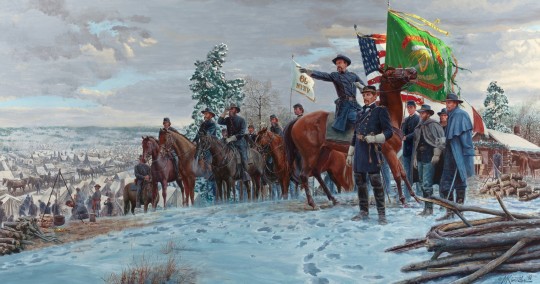

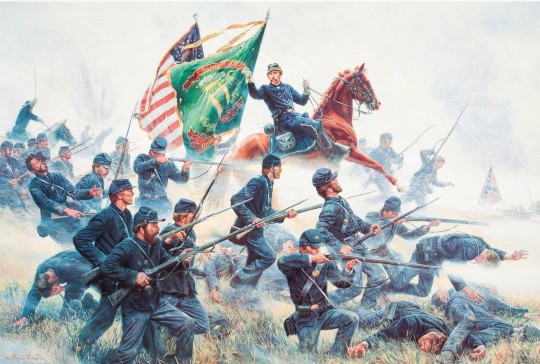
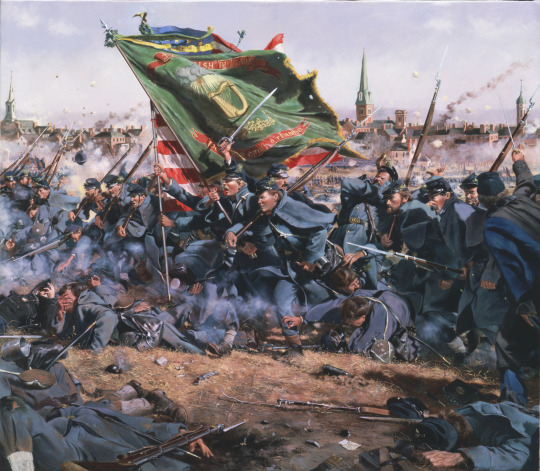
Organized in 1861 shortly after First Bull Run, The Irish Brigade’s nucleus was the 63d, 69th, and 88th New York Infantry. In the fall of 1862 the 28th Massachusetts and the 116th Pennsylvania were added, and the 29th Massachusetts served with it for a short time. It saw action in the Peninsular Campaign, at Antietam, Second Bull Run, Fredericksburg, Chancellorsville, Gettysburg, Cedar Run, The Wilderness, Spotsylvania Court House, Cold Harbor, and Petersburg, in the 1st Division of the II Corps. Reorganized in November 1864, with the 7th New York Heavy Artillery replacing the 116th Pennsylvania, it was by then no longer the old organization and certainly could not be truthfully designated the Irish Brigade. It had suffered over 4,000 casualties in killed and wounded, a total which exceeded the number of men enrolled in it at any given time.
Of the five men who commanded the Irish Brigade, three were killed and the other two wounded. Colonel Richard Byrne was mortally wounded at Cold Harbor; Colonel Patrick Kelly was killed at Petersburg; Major General Thomas A. Smyth died at Farmville; and Brigadier Generals Robert Nugent and Thomas Meagher were both wounded.
The most colorful and flamboyant of its leaders was the original commander and organizer, General Thomas Francis Meagher. Born in County Waterford, Ireland in 1823, he was described as ‘the counterpart of some rash, impolitic, poetic personage from Irish poetry or fiction.’ Son of a wealthy merchant, he was an active disciple of Irish liberty and participated in the various independence movements. In 1845 the British exiled him to Tasmania. Three years later he escaped and eventually made his way to New York City. At various times a lawyer, lecturer, newspaper editor, and politician, his flaming oratory had made him a favorite of the ‘Young Ireland’ group and he soon became the political leader of the Irish element in New York. At the outbreak of the Civil War he raised a Zouave company and commanded it at First Bull Run as part of the 69th New York State Militia. That winter he organized the Irish Brigade and President Lincoln appointed him brigadier general of Volunteers in February 1862. (x)
The Fighting 69th by Mort Kunstler (x)
Fight’n Irish by Dale Gallon (x)
Raise the Colors and Follow Me! by Mort Kunstler (x)
Clear the Way by Don Troiani (x)
#american civil war#us civil war#mort künstler#dale gallon#don troiani#history#acw#i'd recommend the article i linked cause it's really good#i was thinking of maybe just posting and meagher but i like a lot of paintings that include the irish brigade#so i thought it was a good time today lol
66 notes
·
View notes
Text
Civil War Fun Facts #8
General Ulysses S. Grant wasn’t the bloodiest general of the war—Robert E. Lee was.
Mary Lincoln called Grant a “butcher” for the horrific losses sustained by his troops during the Overland Campaign in the spring of 1864—twice the number of casualties as Lee’s army. But if casualties are counted proportionally, Lee’s army suffered the most throughout the war. This is because Lee relished the attack, a trait that won him key battles such as Chancellorsville and Fredericksburg but cost him heavy casualties—Pickett’s Charge at Gettysburg is an example—and eventually decimated the Army of Northern Virginia.
( if you wanna learn more about this, I suggest reading “ A Victor, Not A Butcher “ by Edward H. Bonekemper III )
2 notes
·
View notes
Text

Asians in the American Civil War - Private Joseph L. Pierce
“Private Joseph L. Pierce was age 21 when he enlisted in the 14th Connecticut Infantry in August 1862. It's unclear how Pierce ended up in the United States. One story has it that his father sold him to Connecticut ship Captain Amos Peck for $6. Another story was that his brother sold him for $60. Still another was that Peck picked Pierce up while he was adrift in the South China Sea. Peck, a lifelong bachelor, turned the 10-year-old he called ‘Joe’ over to his mother in Connecticut. In his youth, Joe went to school with the Peck family children and formally became Joseph Pierce in 1853. He picked up his last name from President Franklin Pierce. Pierce worked as a farmer in New Britain, Connecticut, at the time of his military enlistment. He listed his birthplace as Canton in Kwangtung Province, China.
Pierce's regiment participated in the Battle of Antietam, Md. Sept. 17, 1862. He suffered some sickness during his time around Washington and was in the hospital for a time. He was assigned to the Quartermaster Department for a bit and rejoined the 14th in time for the Battle of Chancellorsville, Va. in May 1863. The 14th had a distinguished role in the Gettysburg campaign. It fought on the north part of Cemetery Ridge on July 2 and was one of the units that helped repel Pickett's Charge. The 14th was primarily responsible for turning back Brig. Gen. James Pettigrew's North Carolina division. The 14th's regimental history says that during Pickett's charge, Pierce appeared "pig-tail and all, the only Chinese in the Army of the Potomac," but as history reflects, he wasn't in fact the only Soldier of Chinese descent. Today, you can see the 14th Memorial to the north of the grove of trees marking the high-water mark of the Confederacy.”
Source: (x)
33 notes
·
View notes
Text
#OTD in 1863 – American Civil War | Thomas Francis Meagher on Battle of Chancellorsville.
Report of Brig. Gen. Thomas Francis Meagher, U. S. Army, commanding Second Brigade
APRIL 27-MAY 6, 1863 –– The Chancellorsville Campaign
BANKS’ FORD, NEAR FALMOUTH, VA.
April 28, 1863––1.30 p.m.
Maj. JOHN HANCOCK,
Assistant Adjutant-General, Hancock’s Division.
MAJOR: I have the honour to inform the major-general commanding the division that, in accordance with instructions received from him, I…

View On WordPress
#American Civil War#Battle of Chancellorsville#Brigadier Thomas Francis Meagher#General Thomas Francis Meagher#The Chancellorsville Campaign#Thomas Francis Meagher#U.S. Army
5 notes
·
View notes
Text
Richard Stoddert Ewell began his career after graduating 13th out of the 42 students of the American Military Academy’s class of 1840. He was sent to serve in the west with the 1st US Dragoons, and served in the Mexican-American War. During the war, he participated in the battles of Contreras and Churubusco, and received a promotion to captain for his gallantry. On May 7, 1861, he resigned from the United States Army, and entered the Confederate Army.
Ewell participated in a minor skirmish before the outbreak of fighting, and received a commission as a brigadier general on June 17, 1861. He commanded a brigade at the First Battle of Bull Run, but saw little combat. On January 24, 1862, he was promoted to major general and served alongside General Thomas “Stonewall” Jackson through the Valley Campaign in Virginia. He protected Richmond during Union General George McClellan’s Peninsula Campaign, and commanded his troops successfully at the battles of Malvern Hill, Gaines’ Mill, the Seven Days Battles, and the Second Battle of Bull Run. At the Battle of Groveton, Ewell was severely wounded in the leg, which was amputated below the knee. After several months of recovery, Ewell returned to the army and participated in the Battle of Chancellorsville. On May 23, 1863, Ewell was promoted to lieutenant general to replace General Jackson, who had been mortally wounded at Chancellorsville.
Ewell then participated in the Battle of Gettysburg, but received criticism for his actions. Although he met with great success during the early portions of the battle on July 1, 1863, he did not continue to assault Union positions, which provided Union troops the time they needed to reorganize and prepare defenses. Although confusion exists as to why Ewell did not continue to attack the Union troops, many of the generals in Robert E. Lee’s army felt that Ewell actions helped lead to the Confederate defeat. Following the Gettysburg Campaign, Ewell performed well during the Battle of the Wilderness, but again received criticism for his inaction and indecisiveness at the Battle of Spotsylvania Court House. Following the battle, Ewell, who was suffering from health problems, was relieved of commanding his division, and sent to command the defenses of Richmond. During the retreat from Richmond, Ewell and his men were surrounded and captured at Sayler’s Creek on April 6, 1865. He remained imprisoned at Fort Warren for the remainder of the war.

5 notes
·
View notes
Text
Breakthroughs in Board Wargaming
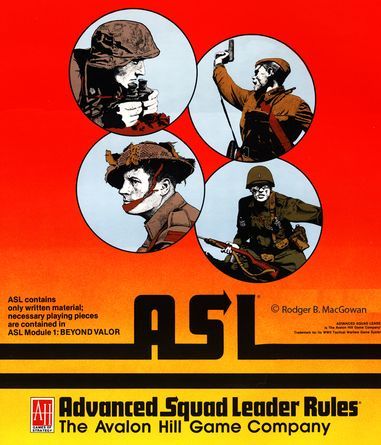
By Blaine Lee Pardoe
Having been a player and author in the gaming industry for well over three decades, I have seen numerous innovations that have emerged in wargaming. I make no claim that these are the most important breakthroughs, but merely some that have had a lasting impact on the games that we all love and play.
The following list of breakthroughs in board wargaming is far from all-encompassing but includes advances I have taken note of over the years. Also, I have made my best-effort to attribute the innovators; but comprehensive histories of games simply are few and far between, which means that there may be mistakes. A lot of small game companies have come and gone, especially in the early years, making verification of some of the material challenging.
As such, here is my suggested list:
NATO symbols for counters
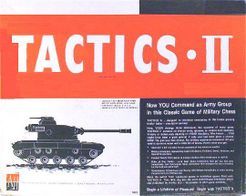
Avalon Hill’s Tactics/Tactics II was the first wargame that introduced the NATO symbols for unit designations. The NATO symbol set was a ground-breaking innovation that many publishers still utilize today. It introduced military symbols to a primarily civilian audience. Once understood, it provides players the ability to identify unit types across a variety of games. Despite being a military iconography, they became widely accepted and a mainstay in civilian gaming even now, something many of us take for granted.
Combat Results Table (CRT)
Prior to Combat Results Tables, combat tended to be resolved in the same manner as Risk – with simple dice-off resolutions. Dicing off rarely took into account the odds of the battle and, if they did, they abstracted them to the point of meaninglessness. We have all experienced attacking in Risk with 20 armies against three and losing.
CRT’s changed wargaming in that they forced players to look at overall odds in terms of attack and defense to determine combat resolution. Resolutions themselves could be varied depending on the game and the results. Always the trendsetter, Avalon Hill’s Tactics/Tactics II was the first published wargame that introduced this concept and altered wargame design and development from that point on.
Hexagon maps
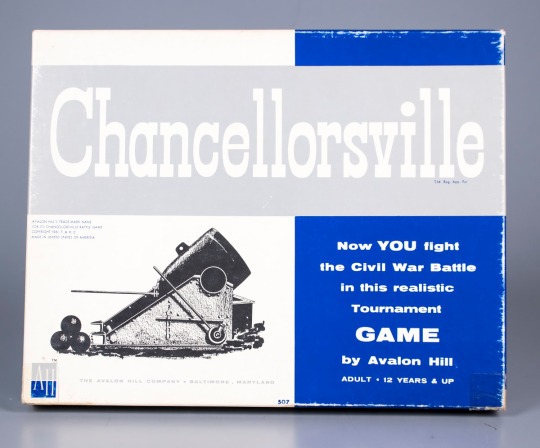
Hexes have long been a mainstay of wargaming. Rand Corporation began using hexes on maps for its games in the late 1950s, but these were not commercial products. Most early games used squares for terrain/movement. Hexagons changed everything. There are a number of contenders as to the first published game that utilized these, but the most widely accepted innovator in this category was Avalon Hill’s 1961 Chancellorsville game. Once Chancellorsville became a product, almost every other game designer defaulted to the use of hexes on their game maps.
Cards as part of combat resolution

Cards really first surfaced in board gaming with Risk (1957). The cards were not a factor of combat but rather the means of generating reinforcements. There was one game that used cards that impacted combat resolution, and that was the release of Kriegspiel by Avalon Hill in 1971. While not a wildly successful game, the tactical cards used added a new dimension to gameplay. Avalon Hill’s 1776 used a card tactics system, leading to other board games integrating cards into combat in the years that followed.
Geomorphic Maps

The introduction of geomorphic maps, or maps that can be reconfigured and used for a variety of scenarios, was a stunning innovation at the time. It allowed game developers to use a relatively small set of maps to create multiple scenarios, without having to create unique layouts. Jim Dunnigan’s Avalon Hill release of Panzerblitz in 1970 broke this ground. Games like Advanced Squad Leader have amped up this concept to a whole new level of variety and variance.
Quad Games
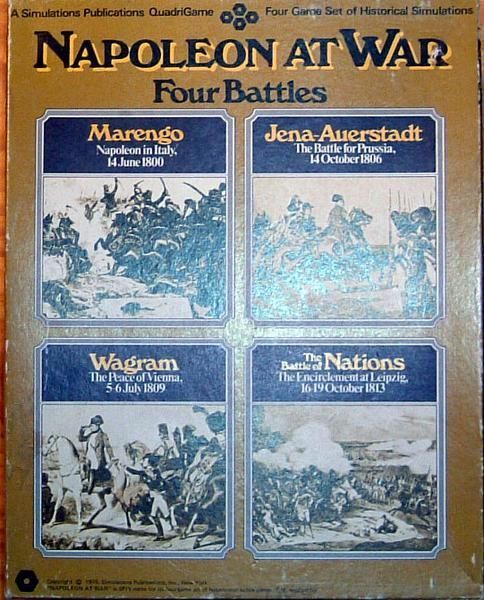
In 1975, SPI introduced a unique innovation in the industry with Napoleon At War Quad Game – the quad-game concept. Quad games had a standard set of rules, four unique maps, rules for the individual games (there were four in a pack – hence the ‘quad’), and counters for the four games. The games were not huge in scale but designed to be highly playable with players only having to learn one set of core rules and integrating minor modifications to those rules for specific battles.
On the surface, this may not seem like much of an innovation – but it ushered in a new era of game series for the wargaming industry. Wargaming companies could create a single set of core rules for a series of games. It reduced development time and costs since the companies could focus on the maps, counters, and variant rules for that particular game. Companies that have quad-games in their series can trace their origins to SPI for this innovation.
Games produced as part of a magazine
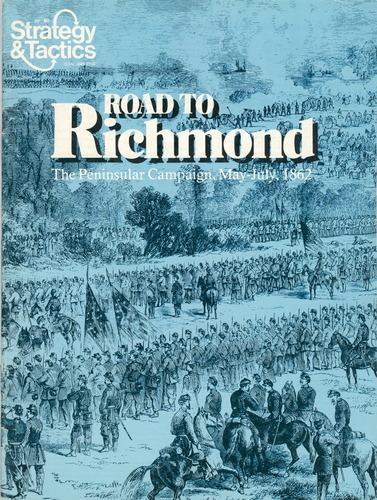
Strategy & Tactics, initially produced by SPI, was a game-changer (pun intended) in the wargaming industry. Starting in 1968 with issue 18, a game was provided as part of a historical magazine. These games were of almost equal quality to those produced by SPI at the time, sans the box and counter system. Some would go on to be published in box form.
With Strategy & Tactics, you got history articles about a subject and could then simulate it. The price was reasonable, allowing for a lot of gamers to subscribe. Many gamers got their initial fix on gaming with a copy of Strategy & Tactics, and it and a number of other companies leverage the same model today.
Dots in Hexes to Determine Line of Sight

Line of sight on hexagon-based wargames was always a bit of a challenge. Given hex sizes and the geographic features, it was sometimes a challenge to determine whether line of sight/line of fire was blocked. It often led to debates/arguments, some of which required involving the game designers.
Game designer John Hill tackled this issue head-on with the Avalon Hill 1977 release of Squad Leader. To resolve these conflicts, he placed a tiny dot in the center of the hexagon to be used to draw the line of sight. If anything touched the line, it was considered blocked. While this does not seem like a stunning innovation, many game companies have leveraged this idea over the years, and it has often brought an end to game table debates before they started.
Progressive Wargame Rules

Starting in the 1970’s, wargames started to explore the gap between realism and playability by becoming more complex. In doing so, it often became an onerous task to attempt to read, digest, and process increasingly thicker rulebooks.
Avalon Hill broke new ground in 1975 with their Tobruk: Tank Battles in North Africa by introducing a progressive set of rules. Players learned the core mechanics of the game and played a scenario that used those rules. They then would read more rules, learn more gameplay features, then play that scenario… and so on. Each scenario built off of the other, introducing more game mechanics until the players were prepared to play utilizing all of the game rules.
This teaching concept for game play allowed companies to introduce more complicated games in an easier to process format.
The Monster Game
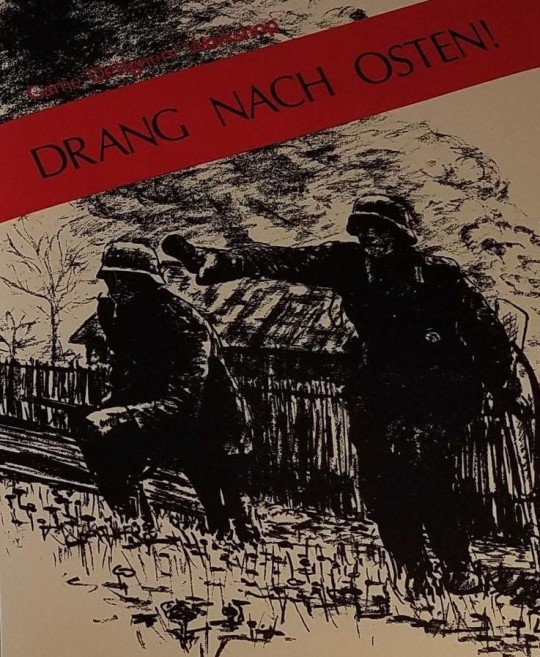
Attempting to qualify what constitutes a monster game can be challenging. Generally, it is a game that has a massive map and counter set and cannot be played in a signal session. Essentially, monster games are big, expensive, and require a significant commitment of time to play. GDW (Game Designers’ Workshop) broke new ground in 1973 with Drang nach Osten! It covered the eastern front of WWII and was staggering in terms of scale, with five 21”x27” maps, 1700+ counters, and a playing time that was easily well over 200 hours.
Other publishers hopped onto the bandwagon with SPI releasing War in the East a year later. Other monsters followed, including Terrible Swift Sword (Gettysburg), War in the Pacific, Campaign for North Africa, GDW’s Europa series, and Avalon Hill’s magnum opus, The Longest Day. While the price of these monster games has increased over the years, they are still a significant niche in the wargaming marketplace.
The Monster Game Runner Up – The Rules Monster

Not all game systems can be considered monsters because of the time to play them or their sheer bulk but by the staggering ruleset. The winner in this category is Advanced Squad Leader by Avalon Hill and Multiman Publishing. Introduced in 1985, this game was on the same tactical scale as the original squad leader – but with a staggeringly thick three-inch binder’s worth of rules. With supplemental releases added in, it is over 1,000 pages of rules. Advanced Squad Leader was not just a game, it was a commitment. The game has sold well over a million copies and remains in print in several forms even today.
So there you have it – my personal list of early breakthroughs – some big, some small, but all with some sort of impact on the games we enjoy playing.
--
At SJR Research, we specialize in creating compelling narratives and provide research to give your game the kind of details that engage your players and create a resonant world they want to spend time in. If you are interested in learning more about our gaming research services, you can browse SJR Research’s service on our site at SJR Research.
--
(This article is credited to Blaine L. Pardoe. Mr. Pardoe is a long-time gamer and has written material for numerous RPG’s and game systems over the years and is an award-winning author and historian. He is a New York Times bestselling author and has presented on historical subjects at the US Naval Academy, the US National Archives, and other prestigious venues.)
5 notes
·
View notes
Text
Confedetate Veteran Sergeant Berry Greenwood Benson.
Washington D.C. Confedetate Veterans Reunion And Parade 1917.
He wears the uniform he wore the day he walked home in 1865 carrying his rifle he carried that day as well.
~~~~~~~~~~~~~~~~~~~~~~~~~~~~~~~~
Berry Benson was born on Feburary 9th 1843 in Hamburg, South Carolina, just across the Savannah river from Augusta, Georgia. In 1860 Berry Benson enlisted with his brother in a local militia unit aged 17 and 15 respectively. The next spring they witnessed the bombardment of Fort Sumter in Charleston, South Carolina.
After the surrender of Fort Sumter the 1st South Carolina Regiment was sent to Virginia where the Benson brothers served under A.P. Hill and Thomas Jackson. The unit fought in battles such as Second Manassas, Fredericksburg, Antietam, and served in Jackson's valley campaign as Jackson's foot cavalry. Berry Benson was wounded at Chancellorsville and thus missed the battle of Gettysburg.
But he had recuperated by winter 1863 and returned to his unit where he was appointed as a scout.
The spring of 1864 brought another Union offensive into The Wilderness.
After a confusing, bloody battle in dense woods, the Union commander, General Ulysses S. Grant, attempted to get around the Confederate army and march on Richmond, Virginia, but was checked at Spotsylvania, Virginia. There followed one of the most terrible battles of the Civil War, in which the severest action occurred at the "Bloody Angle," where Benson fought.
By then the young soldier had won a reputation for scouting enemy positions.
At Spotsylvania he reconnoitered the Union camp and on an impulse stole a Yankee colonel's horse, leading it back to Confederate lines. Sent out a second time on Lee's orders, he was captured and imprisoned at the military prison in Point Lookout, Maryland.
On the second day of his captivity, Benson slipped unseen into the waters of Chesapeake Bay and swam two miles to escape but unfortunately for him he was recaptured in Union-occupied Virginia, and then was sent first to the Old Capitol Prison in Washington, D.C., then to the new prison camp at Elmira, New York.
What happened next is the Civil War's version of "The Great Escape."
Once there he joined a group attempting to tunnel out but the effort was discovered and broken up.
Soon thereafter on October 7, 1864 at four o'clock in the morning he and nine
companions entered a tunnel sixty-six feet long which they had been digging for about two
months.
The earth extracted had been carried away in their haversacks and disposed of.
On reaching the outside of the stockade the prisoners scattered in parties of two and three, Sergeant Benson going alone, since the companion he had intended to take with him failed to escape.
He headed south and miraculously reached Confedetate lines.
Sergeant Benson, half a century later, still preserved the passes given him from Newmarket, Virginia, where he first reached Early's army, to Richmond.
He wrote in 1911 that the men who made their escape were:
Washington B. Trawiek,
of the Jeff. Davis Artillery, Alabama, then living at Cold Springs, Texas; John Fox Maull, of
the Jeff. Davis Artillery, deceased; J. P. Putegnat, deceased; G. G. Jackson of Wetumpka, Alabama;
William Templin, of Paunsdale, Alabama; J.P.Scruggs, of Limestone Springs, South Carolina;
Cecrops Malone, of Company F. Ninth Alabama Infantry, then living at Waldron, Ark.; Crawford
of the Sixth Virginia Cavalry, and Glenn.
Most of them were present at Appomattox.
Upon learning of the surrender of General Johnson in North Carolina Benson and his brother walked home.
In 1868 Sargent Benson married his wife Jeannie Oliver with whom he had six children with and, while working as an accountant, developed a complex book-keeping method that he called the “Zero System” and sold it to companies all over the country.
He and his wife wrote poetry for publication, and his wife and daughters were all fine pianists.
One of his daughters studied violin in New York and became a concert performer.
Berry Benson became an advocate for striking mill workers and worked on developing high-protein food crops for poor black sharecroppers.
Benson also became a nationally known puzzle solver, breaking a secret French code known as the"Undecipherable Cipher," in 1896 (On a challenge) and informed the U.S. War Department that he had done so.
During the Spanish-American War Benson offered his services to the United States Government but unfortunately the war ended before he could be of use.
He was perhaps best known, however, for his private investigation into the case of Leo Frank, an Atlanta factory manager accused of raping and murdering 13-year-old Mary Phagan in 1913. Perceiving discrepancies in prosecution testimony, Benson concluded Frank was innocent. His logical arguments persuaded the Georgia governor that there was enough uncertainty in the case to commute Frank’s sentence from death to life imprisonment, but that did not prevent the accused’s subsequent lynching.
He also headed a campaign to support French war orphans in World War I and convinced his friends and neighbors to adopt some of them.
He later advised the U.S. attorney general of the possibility of fraud involving European and American fiscal exchange rates and, when he became aware of the activities of Carlo Ponzi, specifically warned the Massachusetts attorney general of the original “Ponzi Scheme.”
In the midst of this productive life, Benson became an officer in the Confederate Survivors Association and was chosen to model for the statue of the infantryman atop the Augusta monument, which was dedicated in 1878.
Even in advanced age Berry Benson remained fit and active leading boy scouts on fifteen mile hikes and attending veteran reunions and parades until his death on January 1st 1923 he was 79.
"In time, even death itself might be abolished; who knows but it may be given to us after this life to meet again in the old quarters, to play chess and draughts, to get up soon to answer the morning role call, to fall in at the tap of the drum for drill and dress parade, and again to hastily don our war gear while the monotonous patter of the long roll summons to battle.
Who knows but again the old flags, ragged and torn, snapping in the wind, may face each other and flutter, pursuing and pursued, while the cries of victory fill a summer day? And after the battle, then the slain and wounded will arise, and all will meet together under the two flags, all sound and well, and there will be talking and laughter and cheers, and all will say, Did it not seem real? Was it not as in the old days?”
~ 1st Seargent Berry Greenwood Benson 1st South Carolina Infantry Regiment Company H.
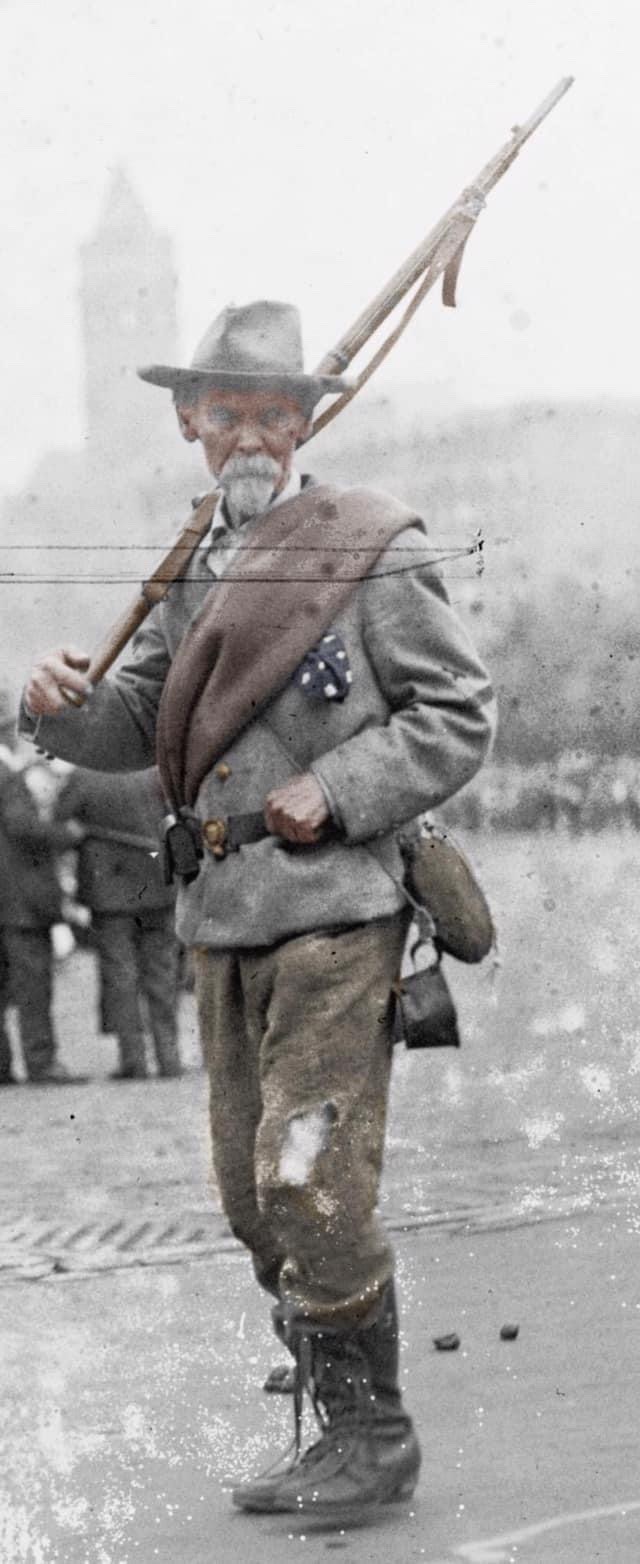
2 notes
·
View notes
Text

May 1, 1863 - In Virginia, the Battle of Chancellorsville began between General Robert E. Lee's forces and Union troops under General Joseph Hooker.
Glory for the Brave
#Amazon https://t2m.io/yKyvdj1X
#kindle https://t2m.io/Uiw7XiiC
#iBook https://t2m.io/BiwhKot6
#Nook https://t2m.io/HPkXeCNb
#Google https://t2m.io/7mrtgMrv
#Kobo https://t2m.io/8m46203M
General Hooker planned to launch a coordinated campaign across a wide landscape and send Lee into a retreat, but General Lee’s army stood its ground, and Hooker’s confidence collapsed. Another slaughter of boys in blue.
Wounded soldiers returned to Washington, D.C. Casualties arrived at the rate of one-thousand a day. People grew callous. An army surgeon declared, “The North has an army of lions commanded by jackasses!”
1 note
·
View note
Photo










Baltimore Street, Gettysburg (No. 5)
The Gettysburg campaign was a military invasion of Pennsylvania by the main Confederate army under General Robert E. Lee in summer 1863. The Union won a decisive victory at Gettysburg, July 1–3, with heavy casualties on both sides. Lee managed to escape back to Virginia with most of his army. It was a turning point in the American Civil War, with Lee increasingly pushed back toward Richmond until his surrender in April 1865. After his victory in the Battle of Chancellorsville, Lee's Army of Northern Virginia moved north for a massive raid designed to obtain desperately needed supplies, to undermine civilian morale in the North, and to encourage anti-war elements. The Union Army of the Potomac was commanded by Maj. Gen. Joseph Hooker and then (from June 28) by Maj. Gen. George G. Meade.
Lee's army slipped away from Federal contact at Fredericksburg, Virginia, on June 3, 1863. The largest predominantly cavalry battle of the war was fought at Brandy Station on June 9. The Confederates crossed the Blue Ridge Mountains and moved north through the Shenandoah Valley, capturing the Union garrison at Winchester, Virginia, in the Second Battle of Winchester, June 13–15. Crossing the Potomac River, Lee's Second Corps advanced through Maryland and Pennsylvania, reaching the Susquehanna River and threatening the state capital of Harrisburg. However, the Army of the Potomac was in pursuit and had reached Frederick, Maryland, before Lee realized his opponent had crossed the Potomac. Lee moved swiftly to concentrate his army around the crossroads town of Gettysburg.
The Battle of Gettysburg was the largest of the war. Starting as a chance meeting engagement on July 1, the Confederates were initially successful in driving Union cavalry and two infantry corps from their defensive positions, through the town, and onto Cemetery Hill. On July 2, with most of both armies now present, Lee launched fierce assaults on both flanks of the Union defensive line, which were repulsed with heavy losses on both sides. On July 3, Lee focused his attention on the Union center. The defeat of his massive infantry assault, Pickett's Charge, caused Lee to order a retreat that began the evening of July 4.
The Confederate retreat to Virginia was plagued by bad weather, difficult roads, and numerous skirmishes with Union cavalry. However, Meade's army did not maneuver aggressively enough to prevent Lee from crossing the Potomac to safety on the night of July 13–14.
Source: Wikipedia
#Baltimore Street#Gettysburg National Military Park#Gettysburg#Pennsylvania#architecture#cityscape#small town#American Civil War#US Civil War#USA#US history#original photography#summer 2019#vacation#tourist attraction#landmark#Brickhouse Inn#Dobbin House Tavern#porch#swing#door#lamp#lantern#exterior
3 notes
·
View notes
Photo
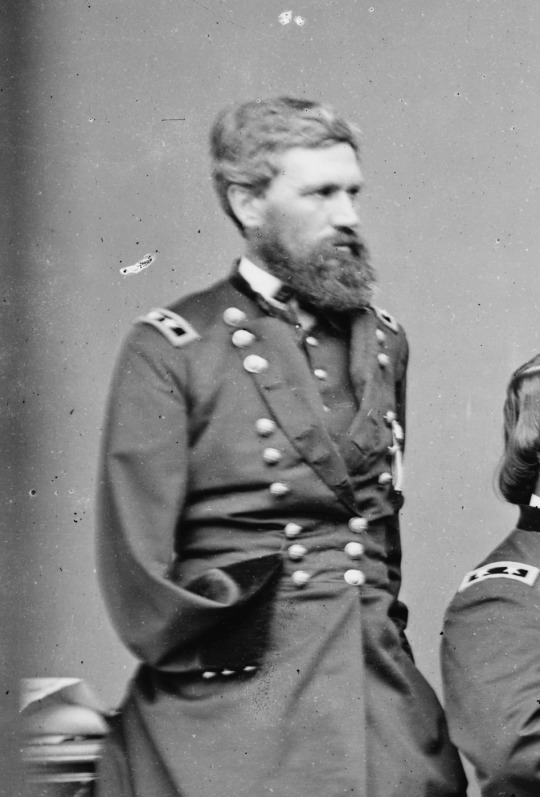


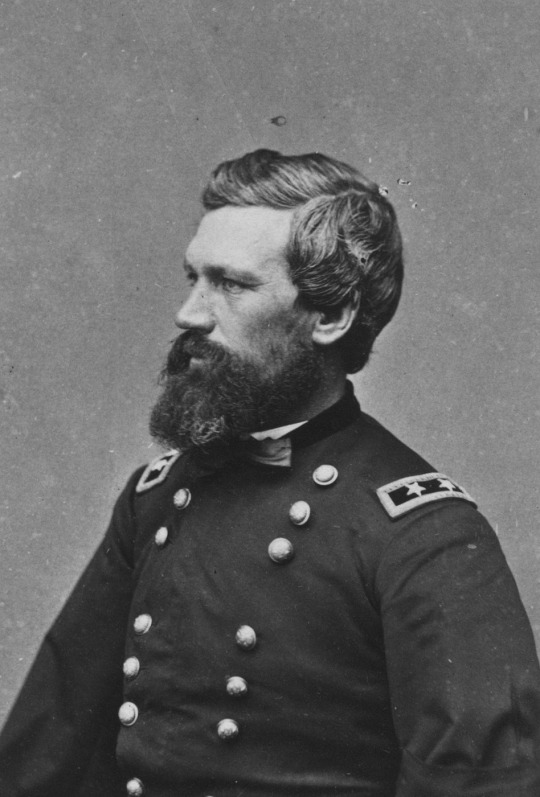
Known as “the Christian General,” Oliver Otis Howard is a unique figure in Civil War history. Despite lackluster performances by troops under his command, Howard’s reputation as an efficient and personally courageous officer would lead to command of an army by the war’s end.
Born in Leeds, Maine to Rowland Bailey and Eliza Otis Howard, young Oliver was educated in North Yarmouth, Maine before graduating from Bowdoin College in 1850. Immediately upon graduation, Howard received an appointment to West Point, joining a long gray line that also included Jeb Stuart, Dorsey Pender, and Commandant Robert E. Lee’s son, Custis. Howard graduated in 1854, fourth in a class of forty-six, one place behind future General Thomas H. Ruger.
In 1857, after routine assignments on the East coast, Howard took part in the campaign against the Florida Seminoles. It was here that the previously religious officer underwent a serious conversion to evangelical Christianity. Though he remained in the army, Howard often contemplated entering the ministry—even while serving as assistant professor of mathematics at West Point. Howard’s piety would later be source of ridicule for the general, and the sobriquet “the Christian General” was rarely used without some disdain.
But as history would have it, a certain grace seems to have accompanied Howard’s wartime service. In May of 1861, he was made colonel of the 3rd Maine Volunteer Infantry, resigning his regular army commission. He commanded a brigade at the First Battle of Bull Run, and though driven from the field in confusion, was promoted to brigadier general that fall. Again at the head of a brigade in the Union Second Corps in the spring of 1862, Howard lost his right arm at the battle of Seven Pines but would return to the field in time to form the Army’s rear guard at Second Manassas. Three weeks later, at the battle of Antietam, he relieved wounded division commander John Sedgwick, and would retain the command until the end of the year.
In the spring of 1863, following his promotion to major general, Howard was elected to replace Franz Sigel as the head of the XI Corps. A revolutionary from Germany, the immensely popular Sigel was the perfect choice to lead the predominantly German unit. Howard, however, with his penchant for strict military and moral discipline, did little to gain the respect of his troops before the battle of Chancellorsville. Posted on the right flank on May 2, 1863, Howard’s men bore the brunt of Stonewall Jackson’s devastating flank attack. Though the corps commander displayed personal bravery in attempting to rally his troops, many—including Army commander Joseph Hooker—blamed Howard and his “flying Dutchmen” for the Union rout. These same troops would flee in confusion two months later at the battle of Gettysburg. Their commanding officer, however, would receive the thanks of the United States Congress for selecting the ground upon which the next days’ battle was fought—a deed most attributed to Maj. Gen. Winfield S. Hancock.
Sent to the aid of William Rosecrans’ Army of the Cumberland at Chattanooga in the autumn of 1863, Howard remained in the western theatre for the duration of the war. In May of 1864, he led the IV Corps during William T. Sherman’s Atlanta Campaign. Following the death of James B. McPherson, Sherman selected the Christian General to head up the Army of Tennessee during his scorched earth campaign through the Carolinas. Howard finished the war a brigadier general in the Regular Army, ranking from the capture of Savannah.
An ardent abolitionist before the war, Howard’s postwar days were spent looking after the welfare of the recently emancipated slaves. In May of 1865, he was made the first and only commissioner of the Freedmen’s Bureau, and though the organization itself was rife with corruption, Howard again emerged from the ordeal unscathed. He went on to serve as superintendent of West Point and in 1893 received the Medal of Honor for bravery at the Battle of Seven Pines. He retired from the Army, a major general, in 1894.
Howard continued to be interested in education late into his life. Having founded Howard University in 1867, the general was also instrumental in the establishment of Lincoln Memorial University in the mountains of Tennessee. Oliver Otis Howard died in October of 1909 in Burlington, Vermont, where he is buried in Lake View Cemetery.
#oliver otis howard#american civil war#civil war#history#so this info about howard is taken from the american battlefield site#and if you've watched some of their stuff there's a guy named kris who uh doesn't like howard lol#and i can feel a little bit of him in this write up which is pretty funny#but yes! ol' O.O.Howard....great head of hair
21 notes
·
View notes
Text
Reclaiming History: The Faded Photograph That Illuminates the History of Prince William County
By: Lisa Timmerman, Executive Director
The Town of Dumfries Town Council convened on Tuesday, 01/19/2021, and approved the “Resolution to Support Renaming of Mine Road to Batestown Road”. On behalf of the Potomac District division of The Prince William Historical Commission, Ms. Yolanda Green discussed Batestown, the significant and vibrant African American community present before the opening of Cabin Branch Pyrite Mine in the late 19th century. “Mine road came up from Dumfries and went to the mine, but the portion that split off to the right and north was known as Batestown Road. After the mine closed, and with it the remaining section of the road leading toward the mine, Batestown Road became labeled as if it was a continuation of Mine Road.” Past and current residents remember the refusal of mail delivery unless they “adopted” the new address and have actively worked to restore the name to its’ historic origin. The Prince William Board of County Supervisors Vice Chair, Andrea Bailey, and members of the commission acted upon the community’s efforts. This resolution furthers the Town’s initiative to reclaim Dumfries African American history by recognizing the predominant and vital African American communities that laid the foundations and led to opportunities and growth for Prince William County.
We will focus on Batestown in a future blog, but today, our archives can help illuminate this resolution with a very intriguing and outstanding photograph.

(Negative to Photo Enhancement of King Bates Cabin)
On the back of this photograph, J.F. Wheat wrote the following: (full transcription below)
“This log cabin was owned and occupied by a Negro named King Bates, unmarried who lived alone. During the war between the States & during the winter of 1864, My Cousin C.A. Dunnington & myself while scouting within the enemies lines one cold winter night called at this cabin & asked for something to eat & to be permitted to warm and rest our tired bodies. King Bates invited us in & gave of such food as he had - permitted us to spend the night & occupy his bed. This negro was a quiet, orderly, sober & industrious citizen, he could easily have had us captured had he been so disposed. As it was, we were warmed & fed and sheltered by this old darkey & in the early morning of the next day continued on our mission & I think on that or the day following, made captures of men Side Arms & horses & returned to our Command then encamped on the south side of the Rappahannock River near Fredericksburg.
I think it was during the winter of 1864, Charles & I spent the night with King Bates. Bates lived many years after the war and did a great deal of work for the old soldiers that he had fed & sheltered during the war. The Cabin is standing today & looks about as it did 43 years ago. Poor old King has passed into that unknown world after a long life of faithful service. The writer will never cease to remember him with feelings of gratitude & good will.
Peace to his ashes.
J.F. Wheat, Co. A. 4th Va. Cav.
Fitz Lees Command. C.S.A.
1907”
We currently do not have writings or transcribed oral histories from Mr. King Bates. Thanks to the efforts of the families and community to preserve the history of Batestown through oral, written, and legal/court records, we know that Batestown formed in the 1820s, and by the 1860s, 550 freed persons lived in the community. As Ms. Green noted, while Batestown residents found life to be economically difficult, King Bates still offered the Confederate soldiers both food and safe lodging.
Based on the information above along with legal records, we can confirm that Charles A. Dunnington and John F. Wheat enlisted in the 4th Regiment of the Virginia Calvary, Company A, The Prince William Calvary. Wheat specifically noted he served under Fitzhugh Lee’s command helping to narrow down locations and timeline. While Fitzhugh Lee became the commander of the calvary of the Army of Northern Virginia on 02/11/1865, he started leading calvary brigades when promoted to brigadier general on 07/26/1862. His command served at the Battle of Second Manassas (08/1862), the Battle of Fredericksburg (12/1862), along with successfully sending scouts to locate the right flank of Joseph Hooker’s Army of the Potomac at Chancellorsville (05/1863). After battling in the Gettysburg Campaign, Lee’s command attacked Union Forces at Trevilian Station in 06/1864. In 09/1864, Lee commanded the Confederate calvary in the Shenandoah Valley, although his injury in the Third Battle of Winchester led to a few months of recuperation. By 02/1865, Lee led the final weeks of the siege of Petersburg. Wheat estimated he stayed at the cabin in the winter of 1864, noting he returned to his command near Fredericksburg after the “captures of men Side Arms & horses.” It is worth noting that during the Fredericksburg campaign, Stuart allowed one brigade under General Wade Hampton to raid Dumfries and the surrounding area in December 1862. The men successfully raided Union forces during each of the four attempts, although they only reached the actual Town of Dumfries during the second raid. The fourth raid, noted as the least successful, still managed to steal wagons and Union soldiers.

(Photograph on Display in The Weems-Botts Museum, Gift of Randolph K. Wheat)
The photograph is currently on display in the Exhibit Room in The Weems-Botts Museum with the negative safely stored in our archives. As visitors investigate the exhibit cases, we ask them to consider the following: What can we learn from this primary source – both the photograph and the handwritten inscription? How did prevalent racist stereotypes and attitudes of the local population influence our historical records? What sources can shed an accurate light on the free and enslaved population in Prince William County?
Note: While our buildings are closed for our winter hibernation, we are excited to introduce new virtual programs along with adapting popular ones to help everyone remain safe. You can find information and tickets to both free and paid programs here on our website. Stay tuned for February 2021 as we feature everything from African American folklore at our Children’s Day to historical horror with The Weems-Botts Bibliophiles!
(Sources: HDVI Archival Files: Bates, Dunnington, Wheat; Town of Dumfries Town Council Meeting of 01/19/2021; Reclaiming Dumfries African American History Presentation by The Prince William County Board of Supervisors & The Prince William County Historical Commission; Encyclopedia Virginia: Longacre, Edward G. Fitzhugh Lee (1835-1905); National Park Service: Battle Unit Details: Confederate Virginia Troops: 4th Regiment, Virginia Calvary; National Park Services: The Civil War: Search for Soldiers Database)
#destinationdumfries#localhistory#community#pwhistory#princewilliamcountystrong#museumfromhome#historyathome#towncouncil#historicalcommission#blackhistory#civilwar#familyhistory#primarysources#photographs#archives
1 note
·
View note